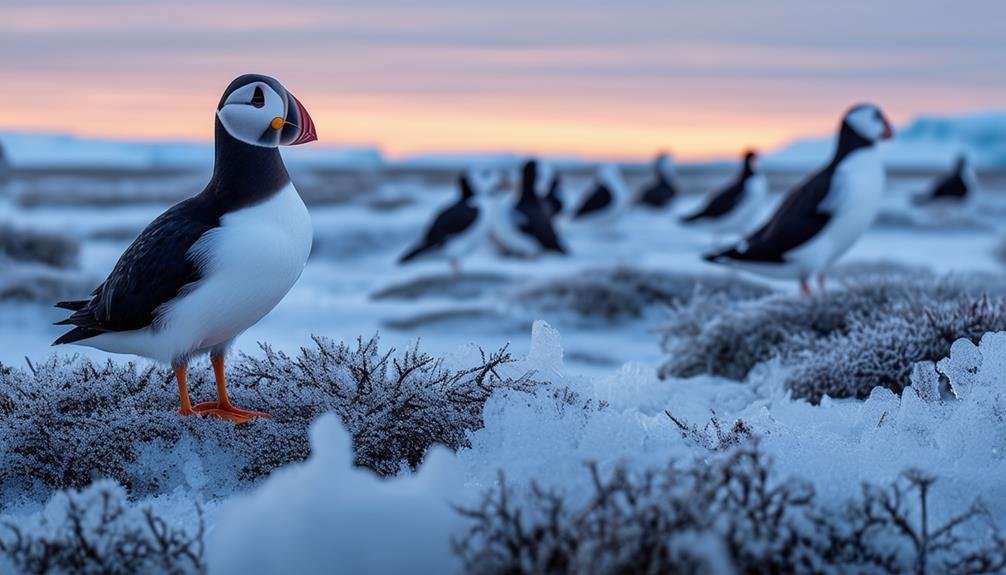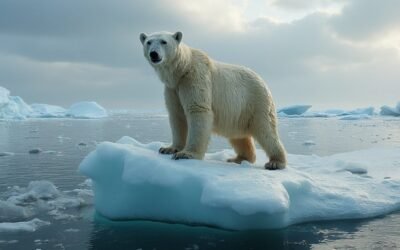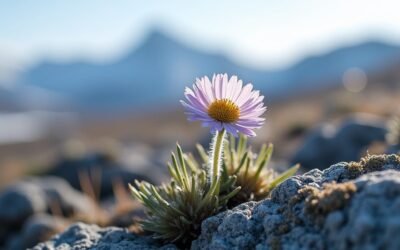To protect Arctic bird species, you'll contribute significantly to their survival by taking actionable steps. Advocate for the preservation of their habitats, like the Arctic National Wildlife Refuge, to prevent industrial impacts. Reduce your carbon footprint and switch to renewable energy to mitigate climate change effects on these ecosystems. Support sustainable practices, including responsible fishing and eco-tourism, which respect wildlife. Protect important nesting sites by regulating access and educating others on their significance. Minimize disturbances by sticking to trails and keeping noise low around sensitive areas. Raise awareness about the threats these birds face, and engage in global conservation efforts. By following these guidelines, you'll make a substantial impact on their survival.
Main Points
- Establish and enforce protected areas to provide safe nesting sites for Arctic birds.
- Limit human access and disturbances during critical breeding seasons.
- Advocate for policies that minimize industrial impacts on Arctic habitats.
- Support and participate in conservation research and monitoring programs.
- Educate communities about the importance and threats to Arctic bird species.
Advocate for Habitat Preservation
To effectively protect Arctic bird species, you must advocate for the preservation of their habitats by supporting conservation efforts in areas like the Arctic National Wildlife Refuge. This vast region serves as an important sanctuary for numerous Arctic bird species, offering them the necessary conditions to thrive. By advocating for habitat preservation, you're helping guarantee that these birds have safe nesting and feeding grounds, which are essential for their survival.
Encouraging policies that focus on habitat protection plays a crucial role in conservation. You can do this by raising awareness about the importance of intact wetlands and coastal areas, which are necessary for migratory birds during their journeys. It's essential to support initiatives that protect these environments from the threats of industrial development and other forms of habitat destruction.
Moreover, collaborating with local communities, conservation organizations, and government agencies is key. These groups have a direct impact on the ground and can implement strategies that effectively preserve the natural habitats of these vulnerable bird populations. Together, through concerted efforts and sustained advocacy, you can contribute significantly to the protection and survival of Arctic bird species in their native habitats.
Reduce Climate Impact
You can greatly mitigate climate change's effects on Arctic bird species by implementing sustainable practices to reduce carbon emissions. Shifting to renewable energy sources and cutting down on fossil fuel use are important steps. These actions not only decrease greenhouse gases but also promote a healthier ecosystem for the Arctic's diverse bird species.
Creating protected areas is another effective strategy. By enforcing regulations that limit industrial activities, you're helping to preserve the natural habitats essential for the survival of these species. Protecting these areas from excessive development and pollution is essential in ensuring that Arctic birds thrive.
Furthermore, it's important to understand the specific impacts of climate change on these birds. By supporting research and monitoring programs, you can help gather critical data that informs conservation strategies and adaptive measures. This knowledge is key to developing targeted actions that can alleviate the pressures climate change places on these vulnerable populations.
Lastly, engaging with local communities and indigenous groups creates a collaborative approach to conservation. These communities often have unique insights and traditional knowledge that can play a significant role in the effectiveness of conservation plans aimed at protecting Arctic species from the ongoing threats posed by climate change.
Support Sustainable Practices
Building on climate mitigation efforts, supporting sustainable practices is key to preserving the habitats of Arctic bird species. You can play a crucial role by advocating for and adopting energy solutions that lessen our impact on these fragile ecosystems. Shifting to renewable energy sources not only reduces your carbon footprint but also diminishes the need for invasive energy development in critical areas like the Arctic Refuge.
Moreover, you should champion sustainable fishing practices. Overfishing threatens the marine food chains that are essential to the survival of many Arctic bird species. By choosing seafood from sources that adhere to responsible fishing methods, you're directly contributing to the health of the marine environments that these birds rely upon.
Don't underestimate the power of informed consumer choices and advocacy. Supporting policies that protect and expand protected areas ensures that the Arctic birds have safe breeding and feeding grounds free from the pressures of overexploitation and habitat destruction.
Lastly, promoting and participating in eco-tourism that respects wildlife can help fund conservation efforts while raising awareness about the plight of these species. Every action you take makes a significant difference in the fight to preserve the Arctic's natural heritage for future generations.
Protect Nesting Sites
Protecting nesting sites is crucial for the survival of Arctic bird species like the Snowy Owl. By focusing on conservation efforts, you guarantee that these critical areas remain undisturbed, fostering a safe environment for breeding and sustaining bird populations. Nesting sites are essential for the reproductive success and long-term viability of Arctic bird species, acting as the foundational support for their life cycles in harsh climates.
Implementing effective conservation strategies involves several key actions:
- Establish Protected Areas: Designate specific regions as protected nesting sites to prevent any form of habitat destruction.
- Regulate Access: Limit human access to known nesting areas during critical breeding seasons to avoid disturbances.
- Educate the Public: Raise awareness about the importance of nesting sites and encourage supportive behaviors towards conservation.
These measures help maintain the delicate balance of Arctic ecosystems. By preserving these sites, you're not only aiding in the survival of individual species like the Snowy Owl but also ensuring the continued biodiversity of the region. Each effort you make contributes significantly to the broader goal of maintaining healthy, thriving Arctic bird populations.
Minimize Human Disturbances

To safeguard Arctic bird species, minimize human disturbances by adhering strictly to designated trails. Sticking to these paths helps protect the delicate nesting and feeding areas of these birds, safeguarding they can breed and feed without stress. When you wander off the trail, you risk damaging these critical habitats, which can have lasting impacts on bird populations.
Next, keep noise to a minimum. Loud sounds can be incredibly disruptive, especially during the vital periods of breeding and migration. Whether it's keeping conversations low or muting electronic devices, reducing noise pollution is a key step in protecting these vulnerable bird species.
Additionally, resist the urge to get too close to nesting sites or bird colonies. Approaching these areas can lead to birds abandoning their nests, which endangers the chicks and disrupts the breeding cycle. Instead, use binoculars or a spotting scope to observe these magnificent creatures from a safe distance. This way, you'll enjoy the beauty of Arctic birds without causing them harm.
Lastly, always follow the guidelines and regulations set by wildlife authorities. These rules are designed to minimize human disturbances and safeguard the survival of Arctic bird species in their natural habitats.
Raise Conservation Awareness
Raising awareness about the essential role of Arctic birds in ecosystem balance is important for their protection. You can make a significant impact by educating yourself and others about why these birds are crucial. Arctic bird species not only enhance biodiversity but are also key indicators of environmental health.
To effectively raise conservation awareness, consider these three strategies:
- Educate Local Communities: Work with schools, community centers, and local groups to inform them about the importance of Arctic birds. The more people know, the more they can help.
- Highlight Specific Threats: Share detailed information about the threats these birds face, like climate change and habitat destruction. This helps underline the urgency of conservation efforts.
- Promote Engagement: Encourage actions that don't harm these birds' habitats. Simple steps like respecting wildlife guidelines during visits to Arctic regions can make a big difference.
Engage in Global Initiatives

After exploring local actions, let's focus on how you can participate in global initiatives to further aid Arctic bird conservation. A significant opportunity lies in the Tavvavouma Arctic Flyways project, which unites efforts across nations to protect migratory paths important for Arctic bird species. By joining this initiative, you're contributing to a coordinated approach that enhances the survival rates of these birds.
Supporting conservation efforts that explore the overwintering grounds and assess the impacts of climate change on Arctic birds is also essential. Your involvement can help gather essential data that guides future conservation strategies. Additionally, participating in bird and insect censuses in Arctic wetlands allows you to directly engage in monitoring biodiversity and population trends, providing valuable insights for ongoing research.
Collaboration with local communities is crucial. Together, you can work on restoring and protecting critical habitats that are important for the birds during their migratory cycles. Your efforts here ensure these habitats remain safe from threats.
Lastly, contribute to initiatives aimed at reducing risks to these migratory birds along their routes and in their wintering areas. Every action you take helps build a safer pathway for these species, enhancing global conservation efforts for Arctic bird species.
Frequently Asked Questions
How Can We Protect Bird Species?
To protect bird species, you should support the creation of bird sanctuaries that provide safe habitats.
You can also help by participating in migration tracking programs to monitor and protect their routes.
Additionally, follow and promote nesting guidelines to guarantee birds can breed safely and successfully.
Collaborating with conservation groups and educating others about these efforts will amplify your impact in safeguarding these crucial creatures.
How Can We Protect the Arctic Environment?
You should know that nearly 60% of the Arctic's surface could be affected by global warming by 2050. To protect this vulnerable environment, prioritize climate change mitigation, support sustainable tourism, and implement strict pollution control measures.
Engaging in these practices helps minimize human impact and preserves the Arctic for future generations. Your involvement and advocacy are essential in maintaining the health and beauty of this unique ecosystem.
What Can We Do to Help the Animals in the Arctic?
To help Arctic animals, you can address climate change impacts by reducing your carbon footprint. Opt for sustainable tourism options that minimize environmental disruption in Arctic regions.
Additionally, advocating for pollution reduction in policies and practices plays an essential role. By making these changes, you're directly contributing to the preservation and well-being of Arctic wildlife, ensuring their habitats remain safe and viable amidst growing environmental challenges.
How Do Birds Survive in the Arctic?
In the Arctic, birds thrive despite harsh conditions through remarkable adaptations.
You'd find their feather insulation essential for retaining heat.
Their metabolic adaptation allows them to efficiently convert food into energy, important in such a sparse environment.
Additionally, migratory behaviors enable them to escape extreme seasonal changes, seeking food and milder climates.
These strategies are finely tuned to their surroundings, ensuring their survival in one of Earth's most extreme habitats.
Do Climate Effects Also Represent a Threat to Arctic Bird Species?
Climate change is rapidly altering the Arctic ecosystem, disturbing nesting, feeding, and migration habits of birds in this fragile region. Rising temperatures and shrinking sea ice exacerbate habitat loss and food scarcity. Effective strategies for protecting polar birds are crucial to preserving these species as their environment faces unprecedented challenges.
Conclusion
As stewards of the earth, it's your responsibility to safeguard the aerial symphony of arctic birds. By advocating for habitat preservation and reducing your climate impact, you're contributing to a safer sky for these feathered sentinels.
Support sustainable practices and protect their nesting sites to guarantee their melodies don't fade into silence. Engage in global initiatives and raise conservation awareness — every action counts.
Remember, preserving arctic bird species isn't just about them; it's about maintaining the harmony of our global ecosystem.


